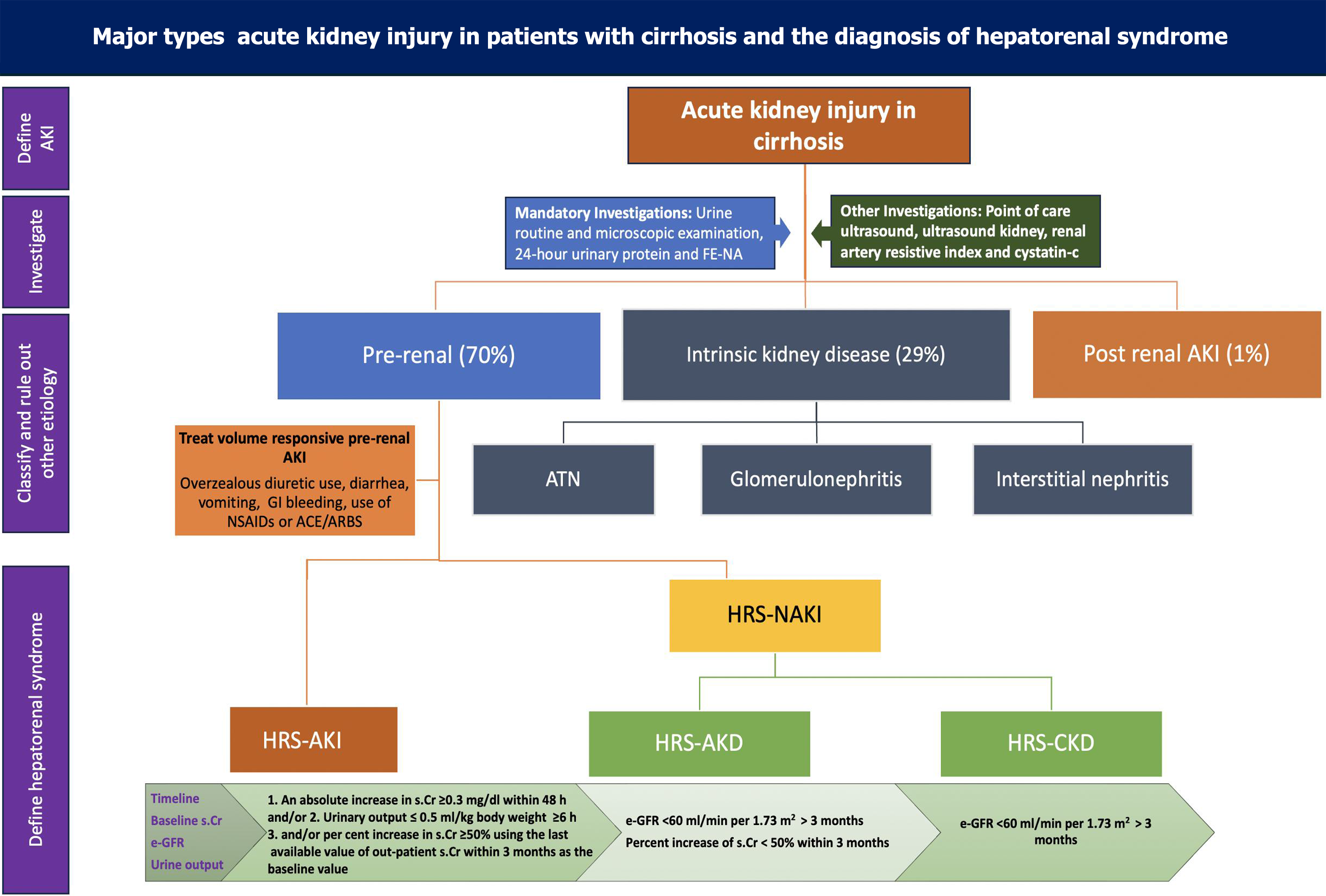Copyright
©The Author(s) 2025.
World J Hepatol. May 27, 2025; 17(5): 104724
Published online May 27, 2025. doi: 10.4254/wjh.v17.i5.104724
Published online May 27, 2025. doi: 10.4254/wjh.v17.i5.104724
Figure 2 Stepwise diagnostic algorithm of acute kidney injury in patients with cirrhosis.
Routine and microscopic examination of urine, 24-hour urinary protein, and fraction urinary sodium excretion are the initial diagnostic modalities. Bedside point-of-care ultrasound, renal artery resistive index, and newer biomarkers can be used as additional supportive evidence to pinpoint a diagnosis of acute kidney injury (AKI) in cirrhosis and classify them. After acute interstitial nephritis and glomerulonephritis have been ruled out, volume expansion therapy with albumin is advocated. Patients who fail to respond to albumin after 48 hours of therapy should be classified as hepatorenal syndrome (HRS). Based on the last serum creatinine, they can be classified as HRS-AKI or HRS-non-AKI. AKD: Acute kidney disease; ATN: Acute tubular necrosis; CKD: Chronic kidney disease; e-GFR: Estimated glomerular filtration rate; HRS-NAKI: Hepatorenal syndrome-non-acute kidney injury.
- Citation: Malakar S, Rungta S, Samanta A, Shamsul Hoda U, Mishra P, Pande G, Roy A, Giri S, Rai P, Mohindra S, Ghoshal UC. Understanding acute kidney injury in cirrhosis: Current perspective. World J Hepatol 2025; 17(5): 104724
- URL: https://www.wjgnet.com/1948-5182/full/v17/i5/104724.htm
- DOI: https://dx.doi.org/10.4254/wjh.v17.i5.104724









